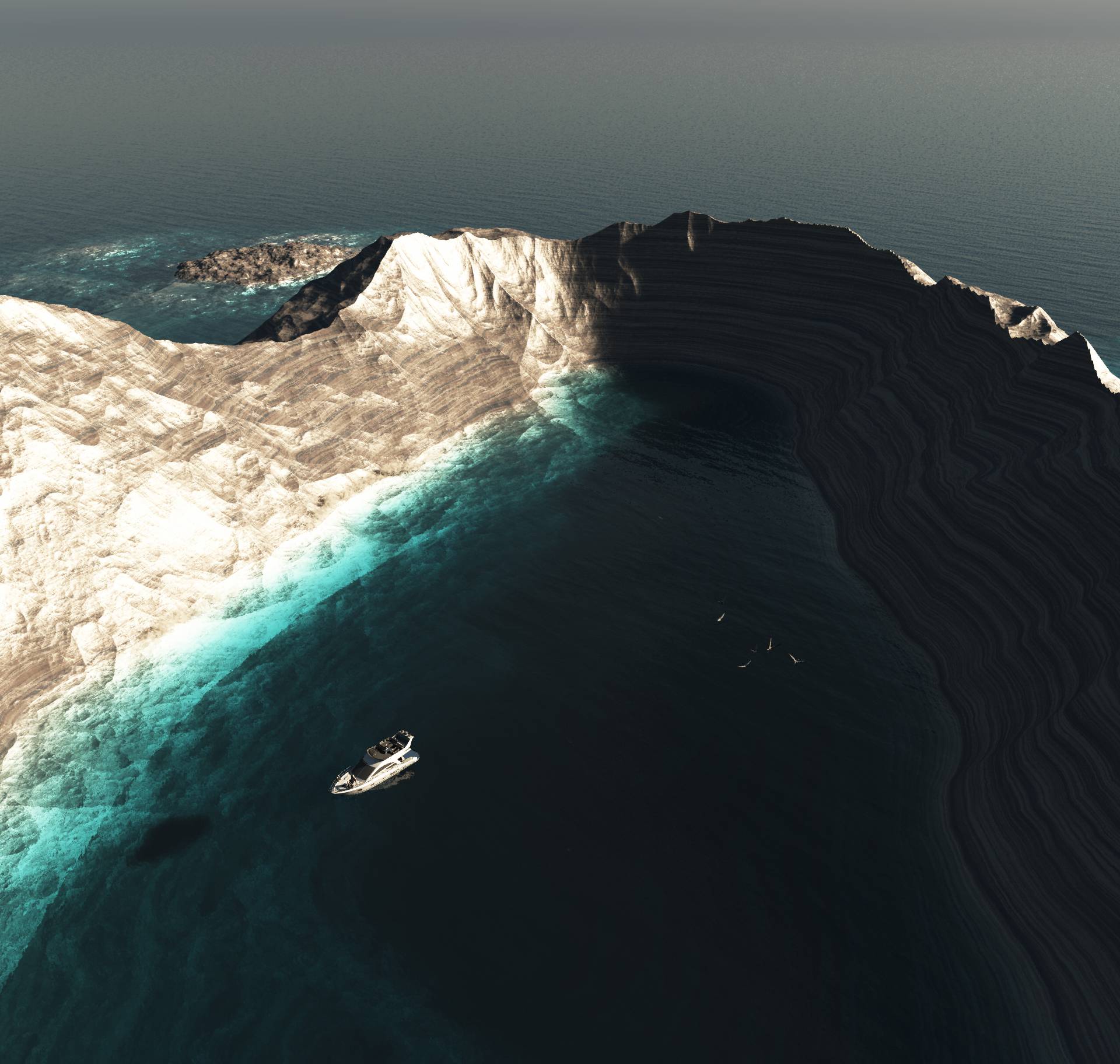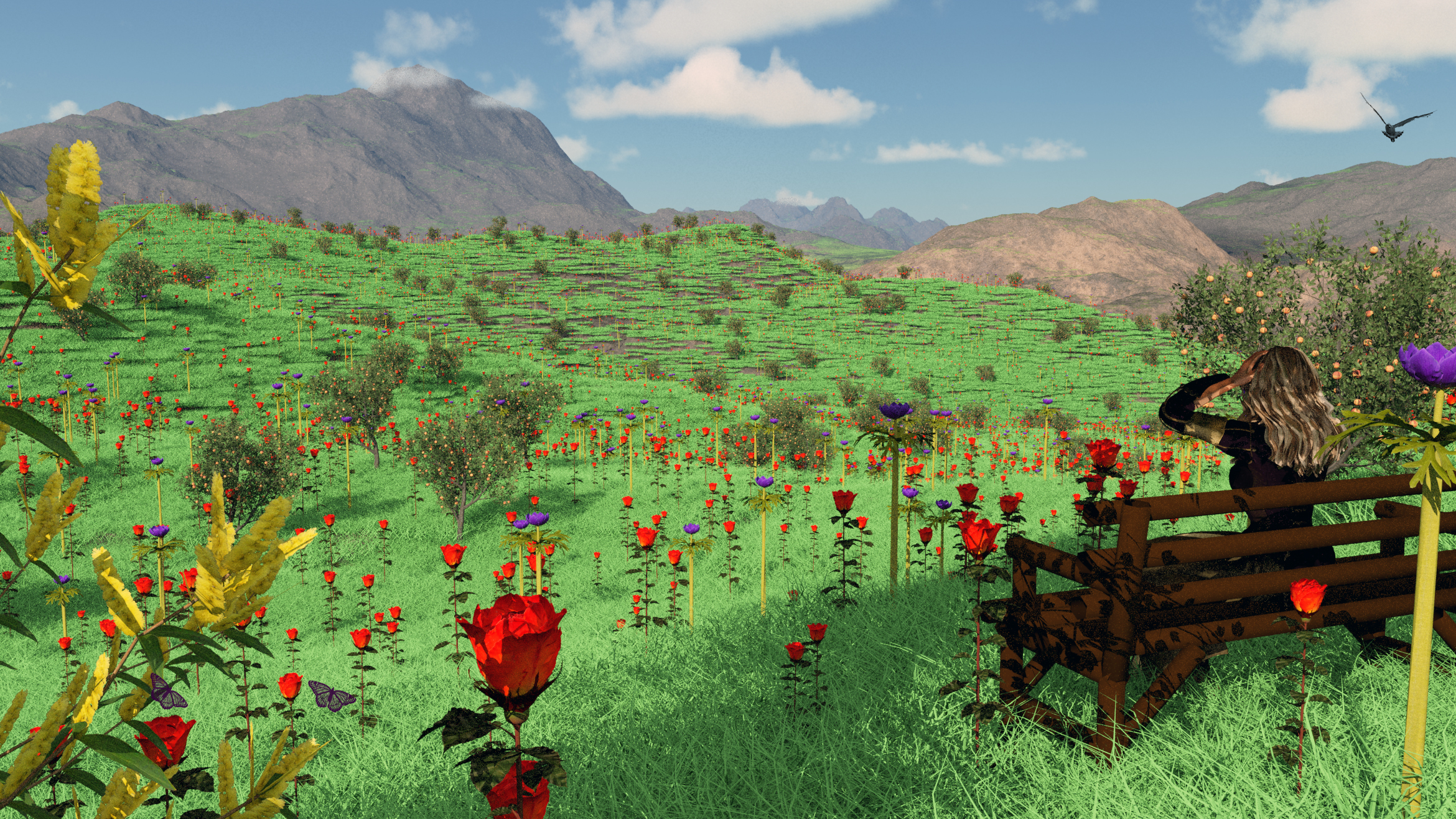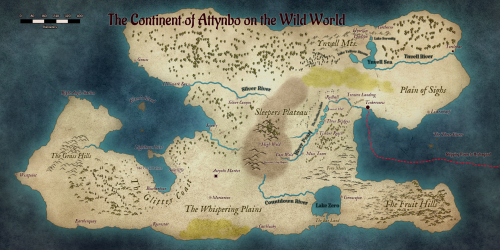Wild World
Wild World, sometimes honoured with the definite article as "The Wild World" is a small super Earth which orbits the star Lambda Aurigae about 42 light years from Earth in the general direction of the galactic rim.
It is well known for the beauty of its landscapes and the complexity and interest of an extensive native ecosystem.
Geography
There are three notable continents on the Wild World, which together occupy about thirty percent of the surface area of the planet with the remainder being open ocean. It is not cold enough to freeze even at the poles and the climate everywhere is generally equitable with mild seasonal variations. The smallest continent in the northern hemisphere is called Attynbo and this is where the vast majority of human settlement has taken place. A second, larger continent to the east and south is called Pyruthia. It has only one major town, the port of Hydragood, which is a centre for the trading of spices, such as pepper, laquonda, cinnabar, saffron, ururlis and salt. Pyruthia has a complex and vast system of caves which are home to the so called "underground forest", consisting of a unique ecosystem of fungal species, some of which produce rare spices more valuable than the ones just listed.
The southern most continent of Utterland, sits over the south polar axis and is the largest body of land. It has never been populated by humans and is little explored, although it is also home to a rich variety of plants and animals.
Fauna & Flora
Species native to the Wild World include the following:-
Retta birds : A small brightly coloured bird, with green and red feathers that lives in the hill forests above High Wold. These birds are capable of producing a loud liquid song that is renowned for its beauty.
Wrath hogs : Fierce little furry dark brown ominverous forest dwellers, roughly the size of Earthly pigs that sleep in caves in the hill forests above High Wold.
Galooms : Sea serpents more than one hundred metres in length that usually inhabit the deep oceans but occasionally break above the surface closer to land and especially during their spawning season off the Glitter Coast.
Lime Trees : Unrelated to the species with the same common name on Earth, Wild World lime trees have mossy black stems and giant umbrella like leaves of an almost violent verdant lime green colour. They grow in the hills above High Wold.
Laquonda : A low growing shrub, native to the continent of Pyruthia with a bright red fibrous bark that can be peeled and grated to produce a bitter spice that is valued in cooking and to flavour a local variety of gin.
Umaril : A small tree native to the continent of Pyruthia. The yellow berries can be crushed and the juice concentrated to produce a spice called ururlis.
History
The planet was colonised in 2378 during the third dynasty of the Resource Management World Government.
The original settlers came from some of the stricter eco-reverential sections of post dislocation Earth society. The disaster at Escaloda was still a recent and raw warning of the consequences of practices that were anathema to them.
They divided themselves from the start into teams, based initially on scientific areas of interest and in due course, these teams formed the basis of longer lasting social structures. The government imposed strict immigration rules for later settlers, including the ability to pass long and complex ecological exams. Wild World society is generally perceived to be very conservative and orthodox by the rest of the Bubble. Cloning, for example, a widespread practice at the time the system was colonied, has always been strictly prohibited although the justification for this philosophy is somewhat opaque.
The Wild World has a rule called the Settlement Limitation. No town is permitted to exceed a population of five thousand individuals and in some cases the town charter sets a much lower limit. New towns are only opened up by planetary order and never more than one in ten standard years. Birth control and human population management is taken very seriously.
Tourism
Wild World is a very popular tourist destination for the wealthy and this is an extremely important source of income for the system. Mass tourism, however, has never been permitted owing to the perceived stress this would place upon the native flaura and fauna.
One of the more famous tourist itineries is the journey by paddle steamer down the river Pearl from Low Wold to Tinkersness. This starts at the foot of the Thousand Step rapids where the river Pearl descends from a high plateau to become navigable.
The walk over the pass in the Ynvell mountains between Hynellin and Lendspa is an almost equally celebrated route, which most reasonably fit visitors can easily complete in a day. It climbs steeply by a series of spectacular cascades known as the staircase waterfalls before leaving dense woodland and crossing the high meadows, where the bright red blood flowers and purple kings chalice grow in profusion.
Here we see a view point on the pass in the Ynvell mountains at the height of summer.
The Glitter Coast is another area of spectacular natural beauty, fringed by reefs which provide a rich environment for divers to explore. The Coral Palace which lies on the Glitter Coast and is shown here, looks at first sight like it might be a lifted atol or the collapsed caldera of a volcano, but in fact it is neither. Finely striated rocks encircle a basin which is connected to the open ocean via two narrow channels.


Wild World - The Coral Palace by DMFW
Type
Planet
Location under
Owning Organization
Inhabiting Species




Comments